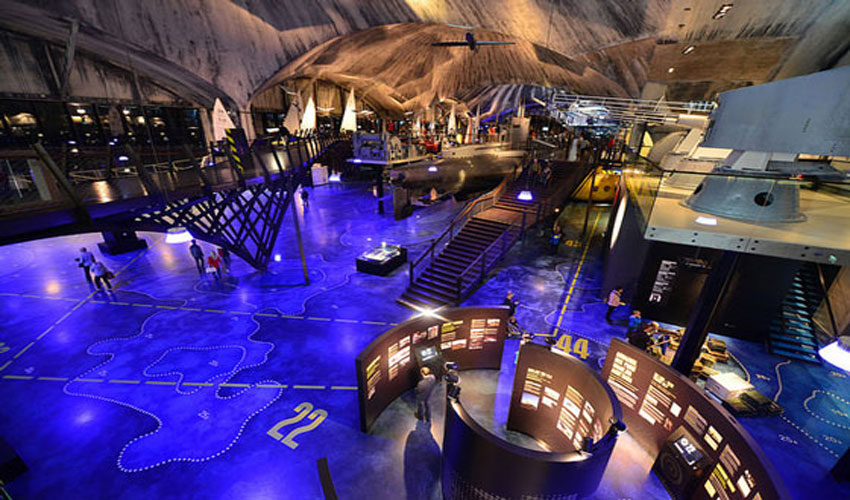Hidden Gems of Estonia – Part Five: Seaplane Harbour, Tallinn

Estonia’s love affair with things that move like lightning, going back some 7,500 years, seems set to stretch out for several more generations into the future as soon as your eyes fall upon this building, from any angle or distance; this jaw-dropping massive concrete structure, originally dreamt up a hundred years ago as part of Peter the Great’s naval fortress, in order to house the then-largest and most technologically advanced fleet of seaplanes in the world, is now arguably the most spellbinding museum of maritime history in the world.
Photo by Sonja Stark
How large is it then?
It measures a whopping 39-by-109 meters. No-one at the time had seen a reinforced concrete shell structure of such an enormous scale when it appeared in Tallinn in 1917.
Only once news of it had traveled around Europe, and into the smoke-infused offices of glossy-haired architects in the 1920s, did projects of a similar scale begin to crop up all over the continent, which then reached their peak in the aviation boom of the 1930s.
Did Seaplane Harbor teem with life from the beginning?
It did. Seaplane Harbor in the 1920s and 1930s was a massively popularholiday resort for the Estonian air force unit. As well as housing seaplanes, it also provided a tennis court as well as an athletics hall under the hangars.
What happened next?
After the World War II, Seaplane Harbour was – obviously – taken over borrowed by the Soviet Army. Champions of aesthetics that they were (not), they rammed it full of industrial grade life plaque, appended an assortment of why-not wood shops to it, then spent the next few decades outside, chain smoking and squinting into the swirling dust trails in the wake of occasional passing military vehicles.
Okay. Well, whoever has renovated it has done a great job.
They have. When the Soviet army finally left in 1991, their assets migrated back into the hands of the Estonian government, who immediately became embroiled in a decade-long judicial dispute concerning the property, unwittingly pushing it even further to the brink of terminal disrepair through neglect. No-one was allowed in or near the premises until 2006.
Did the Government get the all-clear in the end?
They did, at which point it invested in the restoration and renovations necessary to save the structure from dilapidation. It came in the eleventh hour. This is how the former hangars have received a new lease of life as the breathtaking home of the Estonian Maritime Museum’s collection.
What can you see there now?
The museum’s permanent exhibit has some of the most thrilling things you can hope to find in a museum: the oldest shipwrecks from around Estonia, a full size copy of a British seaplane, an explorable submarine, as well as a multitude of other related historic paraphernalia unique to Estonia. But the real star here, is the old seaplane hangar structure itself; light and sound design replicate a surreal effect of feeling as if one is underwater, with gorgeous waves lapping at the ceiling. To top it off, every now and then a light show of planes cuts across the big concrete domes.
Hmm. Does sound worth a look! Where is it exactly?
You’ll find Seaplane Harbour at 17 Küti Street Tallinn. Don’t miss it if you plan to take the Baltic Run.

